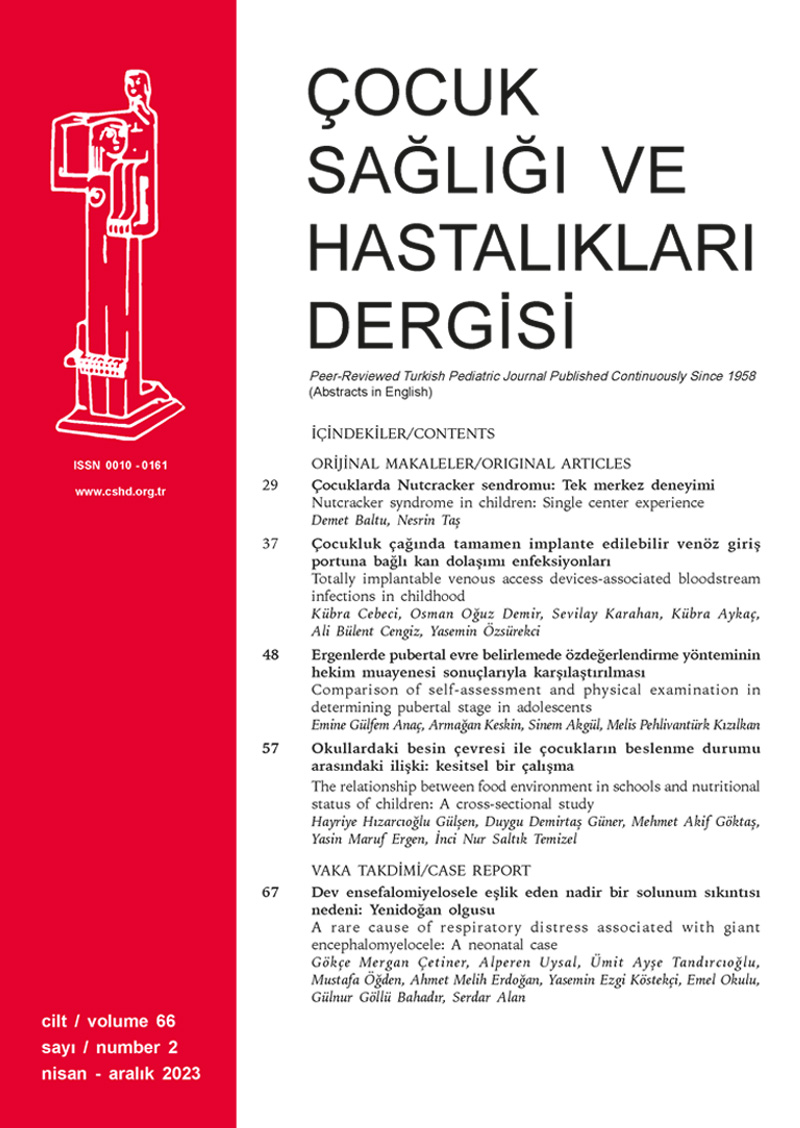Öz
Nutcracker sendromu (NCS) sol renal venin kompresyonuna eşlik eden bulgu ve belirtilerin olması olarak tanımlanmaktadır. Sıklıkla iyi seyirli bir durum olmakla birlikte çocukluk çağında nadirdir ve tedavi ve izlem ile ilgili veriler kısıtlıdır. Bu çalışmada NCS tanısı ile izlenen çocuk hastaların başvuru ve izlemdeki klinik ve laboratuvar bulgularını incelemek ve prognoz hakkında bilgi edinmek amaçlanmıştır. Ocak 2017 ile Ağustos 2024 tarihleri arasında NCS tanısı ile izlenen çocuk hastaların medikal kayıtları geriye yönelik incelendi. Hastaların tanı ve izlemdeki demografik, klinik ve laboratuvar bulguları kaydedildi. Çalışmaya NCS tanısı konulmuş, ortalama tanı yaşı 11.7 ± 3.6 yıl olan, 31 (23 kız, 8 erkek) hasta dahil edildi. Yirmi sekiz (%90.3) hasta asemptomatikti. En sık [22 hasta (%71)] prezentasyon şekli izole proteinüriydi. Yirmi yedi (%87) hasta ortanca 17 (1.6-97.4) ay takip edildi. Bu hastaların 10 (%37)’unda klinik ve laboratuvar olarak tam düzelme görüldü. Sekiz (%29.6) hastada ise son vizitte izole mikroalbuminüri mevcuttu. İzlem sürecinde proteinüride anlamlı azalma ve vücut kitle indeksi (VKİ) z-skorunda anlamlı artış saptandı. Tüm hastalar konservatif olarak izlendi. İzlemde hiçbir hastada semptomlarda artış, glomerüler filtrasyon hızında azalma ve proteinüride artış gözlenmedi. Nutcracker sendromu sıklıkla hematüri ve/ veya proteinüri ile karşımıza çıkar ve böbrek biyopsisi gibi invaziv tetkikler öncesinde mutlaka ekarte edilmelidir. Sıklıkla iyi seyirlidir, konservatif izlem çoğu hastada yeterlidir ve VKİ’de artış ile paralel olarak düzelme oranı yüksektir.
Anahtar Kelimeler: Nutcracker sendromu, proteinüri, hematüri, postural proteinüri








